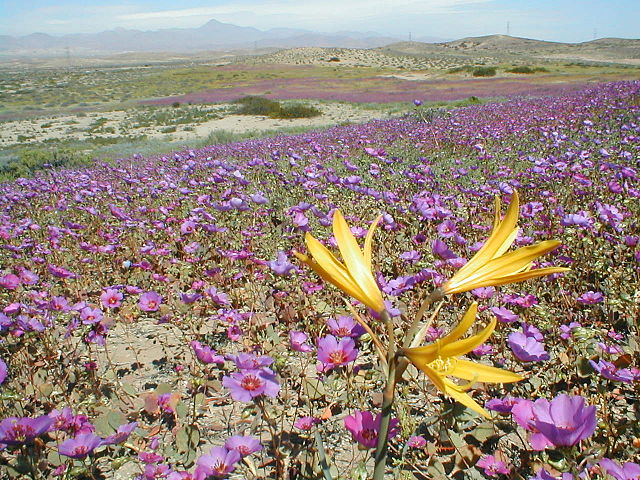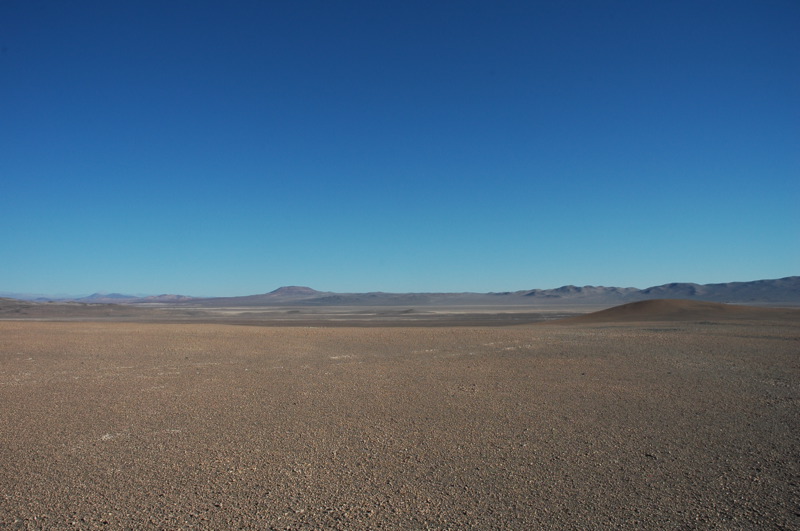 Imagine a landscape that is bare and dull, with many mountains and salt lakes dotting its sands.
Imagine a landscape that is bare and dull, with many mountains and salt lakes dotting its sands.
This is the Atacama desert, which is starved for moisture and humidity, despite being relatively close to the coast. On average, Northern Chile receives less than 0.6 inches of rain in a year.
Not so this year. Hundreds of snoozing plants have sprung to life in a sea of color, completely transforming the bleak landscape. What gave it such a colorful makeover? Let’s find out.
The Atacama Desert
Deserts by definition do not receive any rain. The Atacama Desert of Chile and Peru stretches almost parallel along the Pacific Coast for about 600 miles (1,000km). The average elevation (height) is 13,000 feet (4km) making it the highest desert in the world. Outside the polar regions, this area is also one of the coldest deserts with temperatures averaging between 0 and 25 degrees Celsius.
Climatologists refer to the center of the Atacama as an "absolute desert". There has been no record of rain in certain parts of the desert for over 400 years since humans began keeping records, making it the driest desert on Earth. The peculiar topography of South America - elevation and location - is responsible for this.
‘Desierto florido’

Every 5 or 7 years, the unpredictable El Nino is strong enough to trigger a phenomenon here, known locally as ‘Desierto florido'. This literally translates into a flowering desert and occurs when the rains penetrate the desert surface and reach dormant seeds.
The plants burst forth and bloom – and the usually lifeless landscape is awash with pink, purple, orange, and yellow hues. The phenomenon occurs every 5 or 10 years, depending on the intensity of the spring rains.
Earlier this year, Chile received unusually heavy precipitation, when compared to its historical records. The rains were heavy enough to cause floods, and also triggered a mild flowering in March. Later, more storms in August provided the final boost to the plants, resulting in an even rarer ‘double bloom’ this year. The bright floral landscape has also attracted several insects and insect-eaters. The entire ecosystem has been transformed.
Considering that such intense flowering has occurred after nearly 18 years, an unprecedented number of tourists have visited the area. However, the flowers are not likely to bloom into November and researchers hope the local governments will step in to preserve the land and its hidden riches for the future too.






